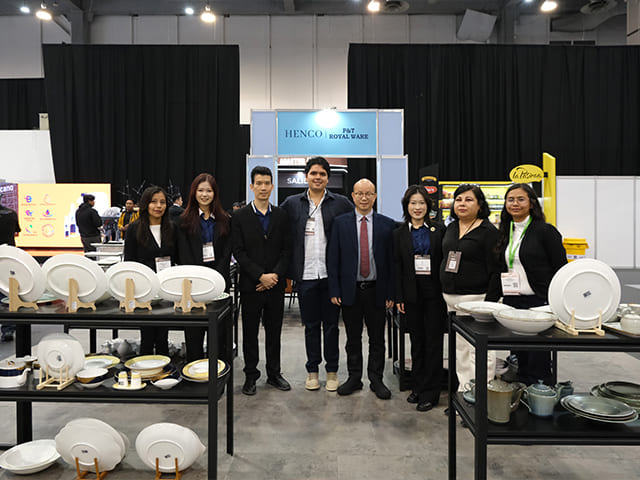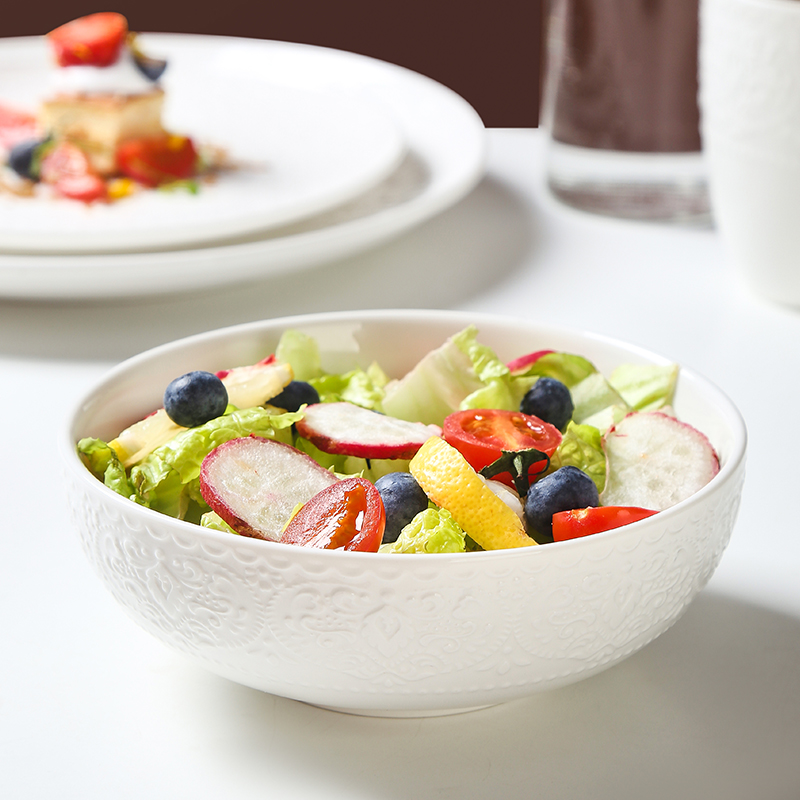
Bowls play a crucial role in the hotel and restaurant industry, far beyond their seemingly utilitarian purpose. These humble vessels have the power to elevate the dining experience for guests and contribute to the overall ambiance and presentation of a meal. From soup bowls to salad bowls, pasta bowls to dessert bowls, each type of bowl serves a specific function, and choosing the right one can make a significant impact on how dishes are enjoyed.
In this comprehensive guide, we will explore the fascinating world of different types of bowls found in hotels and restaurants, shedding light on their characteristics, functions, and how they enhance the dining experience. Get ready to learn all about the bowls that grace the tables of discerning diners and elevate their culinary adventures to new heights.
Bowls by Different Materials
When it comes to hotel and restaurant bowls, the choice of materials is critical as it affects both the presentation and practicality of the dining experience. Let’s explore the various materials used in the manufacturing of these bowls, understand their characteristics and benefits, and see how material choice can impact the overall dining experience.
A. Ceramic Bowls
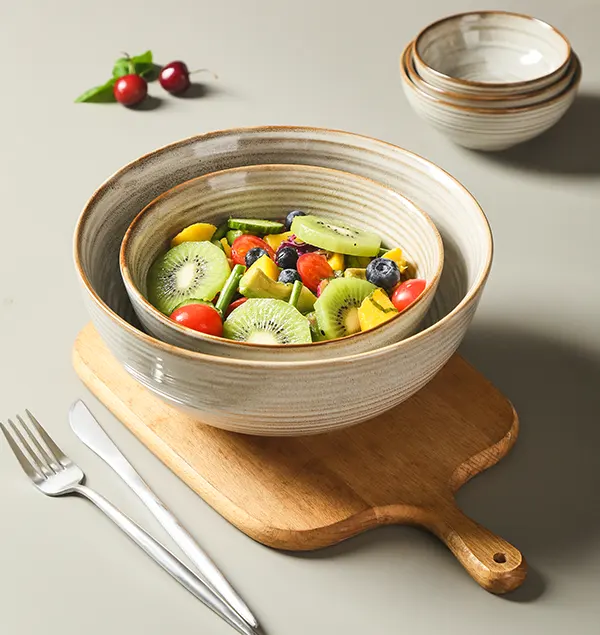
Ceramic bowls are popular for their elegance and versatility. They come in a variety of colors, patterns, and styles, allowing for diverse presentation options. Ceramic bowls have excellent heat retention properties, keeping soups, stews, and other hot dishes warm for longer periods. They are also microwave and oven-safe, making them convenient for reheating or baking certain dishes. Ceramic bowls are relatively fragile and require careful handling to avoid breakage.
B. Glass Bowls
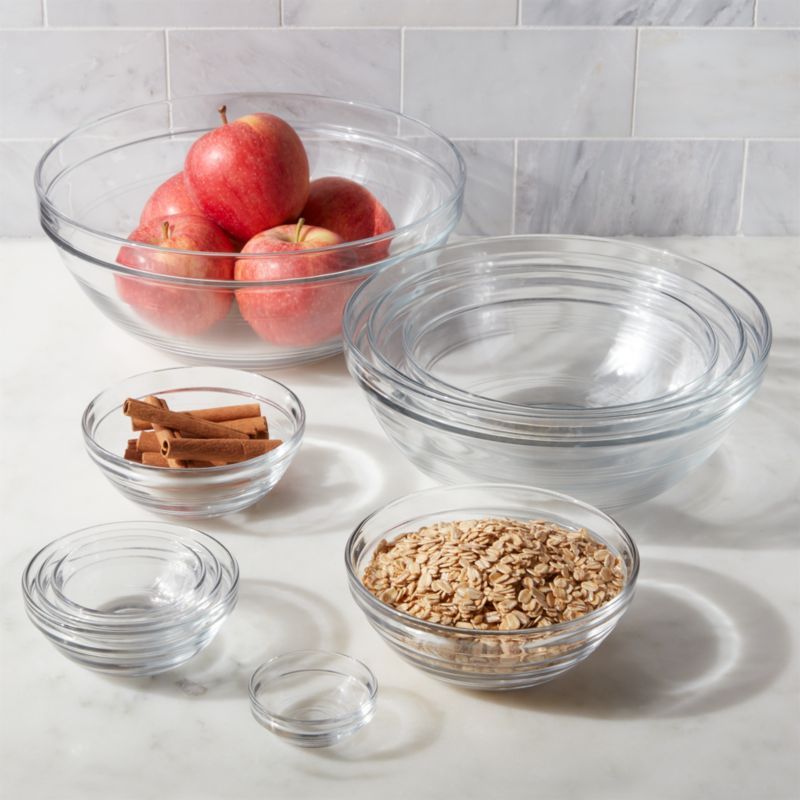
source: pinterest
Glass bowls offer a transparent and elegant presentation, allowing the contents of the bowl to be showcased attractively. They are resistant to staining and do not absorb flavors or odors, making them ideal for serving a wide range of dishes. Glass bowls are microwave and dishwasher-safe, making them convenient for heating and easy cleanup. However, glass bowls are more susceptible to breakage than other materials, and caution must be exercised while handling and storing them.
C. Stainless Steel Bowls
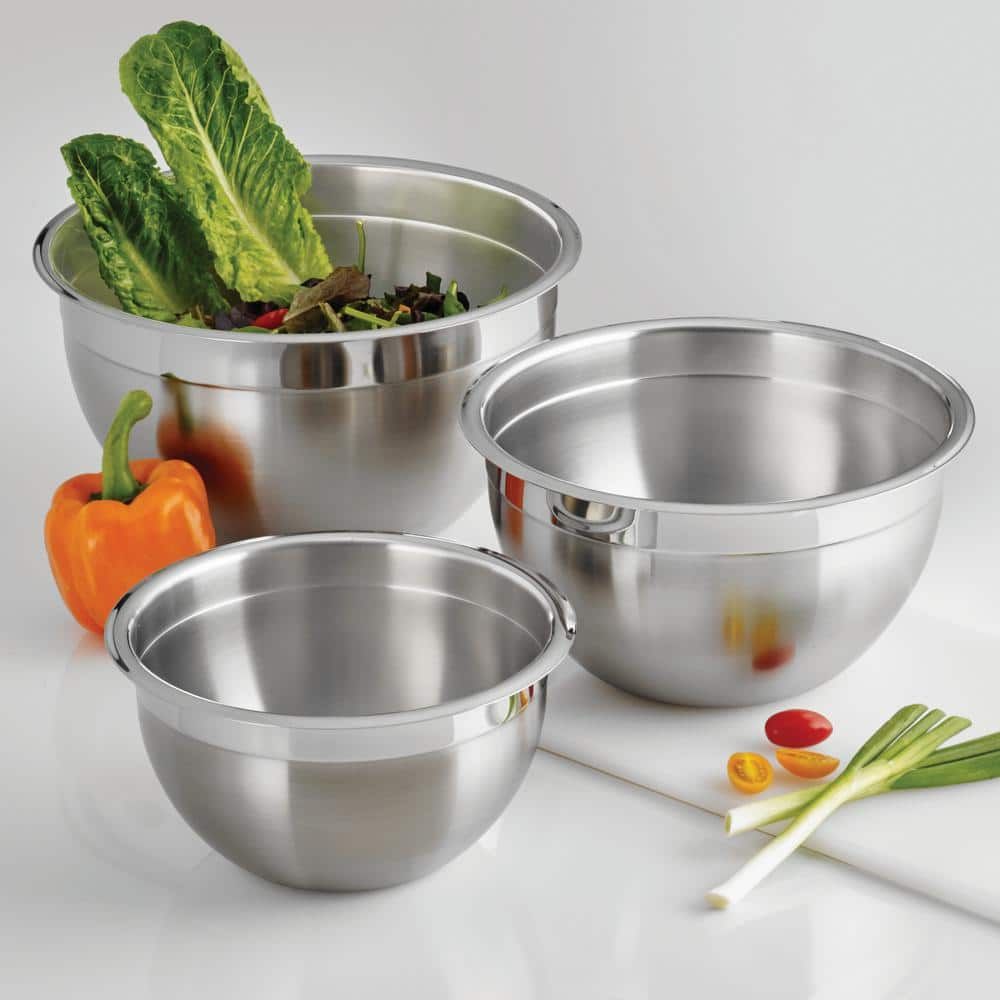
source: pinterest
Stainless steel bowls are highly durable and resistant to rust, stains, and corrosion, making them suitable for high-volume commercial use. They offer a modern and sleek appearance, adding a touch of sophistication to the presentation of various dishes. Stainless steel bowls have excellent heat conductivity, allowing for quick heating or cooling of ingredients. They are easy to clean, dishwasher-safe, and are less likely to break or chip, making them a practical choice for busy kitchen environments.
D. Melamine Bowls

source: pinterest
Melamine bowls are lightweight, durable, and break-resistant, making them ideal for outdoor or casual dining settings. They are available in a wide range of colors and patterns, adding vibrancy to the presentation of dishes. Melamine bowls have good heat resistance but should not be used in microwaves or ovens. They are dishwasher-safe, making cleanup hassle-free.
The choice of material for hotel and restaurant bowls is crucial as it directly impacts both the presentation and practicality of the dishes served. Consideration should be given to the specific needs and requirements of the establishment when selecting the appropriate material, ensuring that it enhances the overall dining experience while meeting the demands of the kitchen and guests.
Bowls by Different Functions
Bowls serve a variety of functions in hotel and restaurant settings, catering to different culinary needs and enhancing the dining experience for guests. From serving soups and salads to presenting pasta dishes and desserts, bowls play a crucial role in both the practical aspects and the aesthetic presentation of meals. This section explores how bowls are categorized based on their functions, highlighting the specific characteristics and designs that make them suitable for their intended purposes.
A. Soup Bowls

Soup bowls are specifically designed to enhance the enjoyment of warm soup dishes. They possess unique characteristics and features that make them suitable for this purpose. Let’s delve into the distinct qualities of soup bowls that make them ideal for serving comforting soups.
Characteristics and Features:
- Capacity: Soup bowls typically have a larger capacity compared to other types of bowls. This allows for generous servings of soup, including broth, vegetables, meats, and noodles.
- Shape: Soup bowls often have a rounded shape with a wider opening and deep sides. This design helps to contain the liquid and ingredients, preventing spillage while making it easier to ladle or sip the soup.
- Insulation: Soup bowls often feature materials that provide insulation to keep the soup warm for longer periods. This allows guests to savor the soup at their desired pace without it losing its comforting heat.
- Designs: Soup bowls come in various designs to suit different dining aesthetics. From classic and elegant to contemporary and vibrant patterns, these designs add visual appeal while complementing the presentation of the soup.
Soup bowls play a vital role in presenting and serving soups in hotels and restaurants. Their larger capacity, deep sides, and insulated materials ensure that the soup stays warm and visually appealing. Whether it’s a hearty stew, a delicate consommé, or a flavorful ramen, soup bowls contribute to enhancing the overall dining experience and offering a comforting start to a meal.
B. Salad Bowls
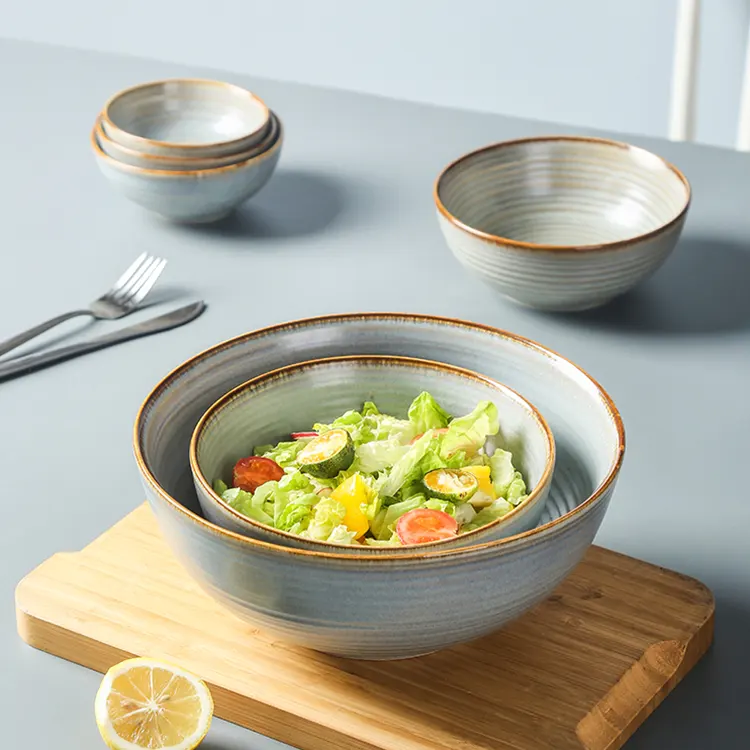
Salad bowls serve the specific purpose of presenting and serving fresh and vibrant salads. They are designed with features that enhance the appearance, tossability, and practicality of salads. Let’s explore the purpose and design elements of salad bowls, along with the ideal size, shape, and material for serving salads.
Purpose and Design Features:
- Size: Salad bowls are often larger than other bowls to accommodate generous portions of greens, vegetables, fruits, and toppings. The size allows for easy mixing and tossing of ingredients without spilling or overcrowding.
- Shape: Salad bowls typically have a wide and shallow shape. This helps in evenly distributing dressing and toppings throughout the salad, ensuring that each bite consists of a variety of flavors and textures.
- Material: Salad bowls are commonly made from materials such as ceramic, glass, or melamine. These materials do not interfere with the freshness and flavors of the ingredients. They also offer durability and the ability to showcase the vibrant colors of the salad.
- Design: Salad bowls often feature wide rims or flared edges, which make it convenient to toss and serve the salad. Some salad bowls may also come with matching utensils or built-in compartments for dressings or toppings, adding convenience and efficiency to the salad-serving process.
The ideal salad bowl should have a spacious interior, a shallow shape, and be made from a material that preserves the freshness and presentation of the salad. Its design should promote ease of mixing, tossing, and serving, providing a delightful dining experience for guests.
C. Pasta Bowls
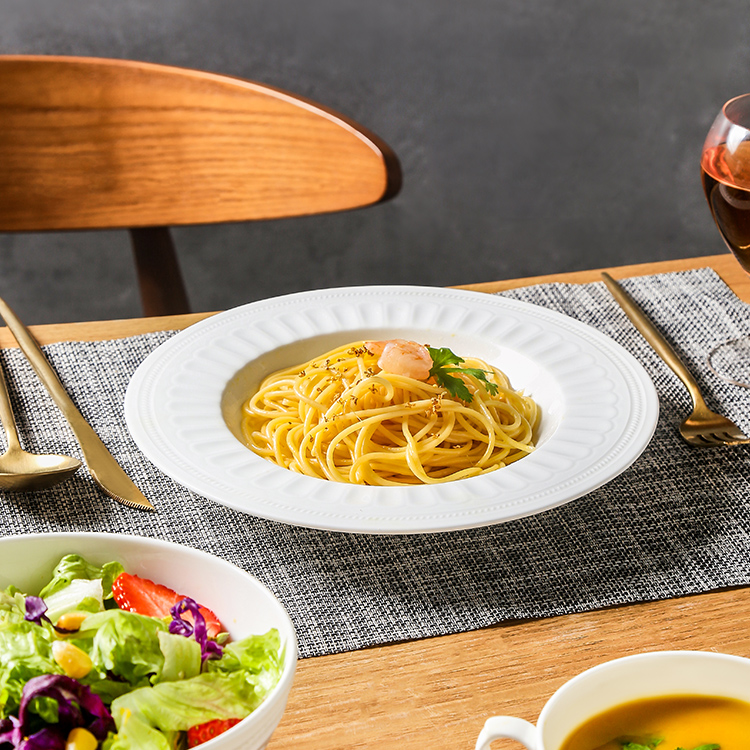
Pasta bowls are specifically designed to enhance the enjoyment of pasta dishes. They boast particular characteristics and designs that cater to the unique needs of pasta presentation and consumption. Let’s explore the specific features and designs of pasta bowls.
Characteristics and Features:
- Shape: Pasta bowls typically have a wide and shallow shape, allowing for the ideal distribution of pasta and sauce. The broad surface area also enables guests to appreciate the visual appeal of the dish.
- Size: Pasta bowls are larger than standard bowls to accommodate a sufficient amount of pasta along with any accompanying sauce, toppings, or garnishes. They offer ample space for mixing the pasta with the sauce without spillage.
- Rim Design: Many pasta bowls feature a slightly raised or curved rim. This design helps to contain the sauce and prevents it from flowing over the edges, ensuring that the dish remains visually pleasing and easy to eat.
- Material: Pasta bowls are commonly made from durable materials such as ceramic or porcelain. These materials retain heat well, keeping the pasta warm during the meal. Additionally, they offer an elegant backdrop to showcase the colors and textures of the pasta.
Pasta bowls are tailored to enhance the experience of savoring pasta dishes. Their wide and shallow design, along with the appropriate size and material, allows for optimal presentation and enjoyment of pasta-based meals. From traditional spaghetti to hearty lasagna, pasta bowls provide a stylish and practical vessel to elevate the dining experience.
D. Rice Bowls
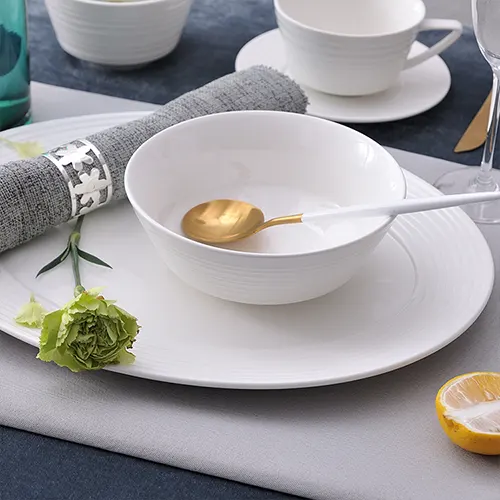
Rice bowls are specifically designed to serve rice-based dishes, commonly found in various cuisines around the world. These bowls possess distinctive design characteristics that ensure an enjoyable and practical dining experience when consuming rice.
Design Characteristics:
- Size: Rice bowls are typically smaller and more compact compared to other bowls. The smaller size allows for appropriate portion control and encourages the enjoyment of rice as a side dish or main course without overwhelming the plate.
- Depth: Rice bowls are shallow in depth compared to soup or pasta bowls. This design allows for easy access to the rice with chopsticks or a spoon, facilitating convenient serving and eating.
- Material: Rice bowls are commonly made from ceramic, porcelain, or other heat-retaining materials. These materials are chosen for their ability to efficiently retain heat, keeping the rice warm throughout the meal.
The ideal rice bowl should have a moderate capacity, allowing for a sufficient serving of rice while promoting portion control. A depth that is shallow enough to facilitate easy access to the rice is preferred. Furthermore, the material should retain heat well to maintain the warmth of the rice while providing a visually appealing backdrop for the dish.
E. Mixing Bowls

Mixing bowls serve a crucial purpose in hotel and restaurant kitchens, providing a practical and efficient solution for food preparation and mixing. They are designed with specific features to facilitate blending, whisking, and combining ingredients. Let’s explore the purpose and functionality of mixing bowls, along with the ideal size, material, and features for efficient mixing and preparation.
Purpose and Functionality:
- Blending Ingredients: Mixing bowls provide an ample space for combining ingredients, whether it’s whisking together a batter, tossing a salad, or marinating meat. Their deep and wide design prevents spillage and facilitates thorough mixing.
- Stability: Mixing bowls are often designed with a flat and non-slip base to ensure stability during vigorous mixing or blending. This prevents the bowl from sliding or tipping over, providing a secure and efficient workspace.
- Easy Pouring: Many mixing bowls feature a spout or pouring lip, allowing for convenient and mess-free transfer of mixtures, liquids, or batters into baking pans, molds, or other containers.
The ideal mixing bowl should be selected based on the specific needs of the kitchen. It should have a suitable size, be made from a durable material, and include features that enhance the efficiency of mixing and food preparation processes in a hotel or restaurant kitchen.
In conclusion, the proper selection of bowls based on their functions is essential in hotel and restaurant settings. Bowls designed for specific culinary needs ensure an efficient and visually appealing dining experience. By understanding the different functions of bowls and choosing the appropriate ones for each purpose, hotels and restaurants can elevate the dining experience for their guests, leaving a lasting impression and ensuring their satisfaction with the culinary offerings.
Conclusion
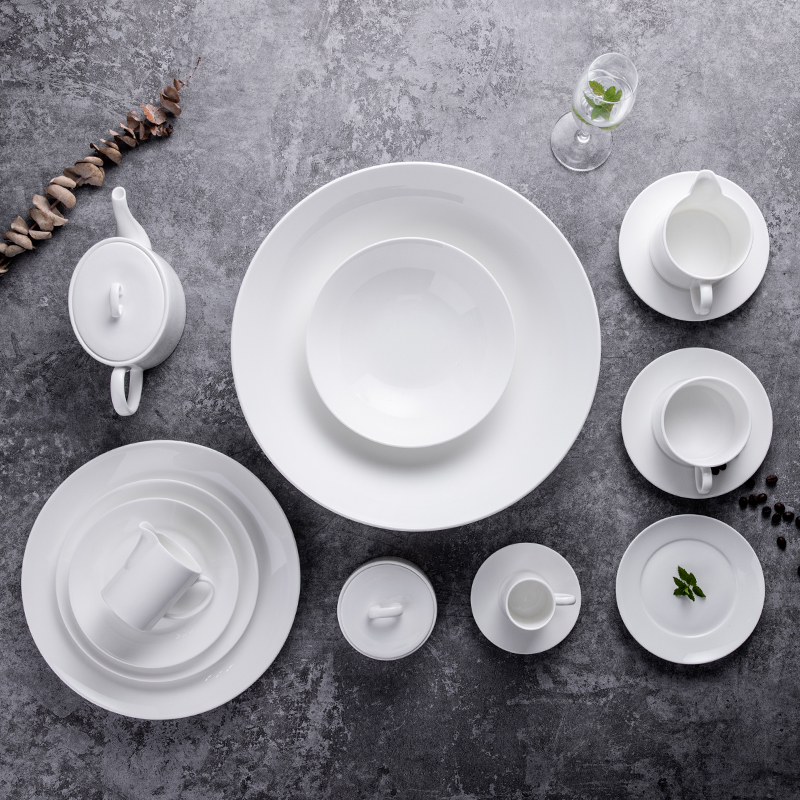
In conclusion, the proper selection of bowls in hotel and restaurant settings is essential for creating an appealing presentation, maintaining food temperature, and enhancing the overall dining experience for guests.
Paying attention to factors such as size, shape, material, and design features ensures that the bowl complements the intended dish and adds to the visual and functional elements of the culinary experience. By recognizing the significance of choosing the right bowls, hospitality establishments can elevate the dining experience and leave a lasting impression on their guests.

